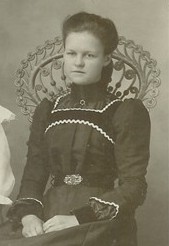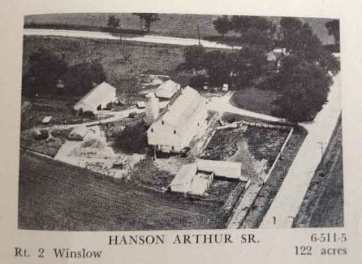The phrase “Invite to Dinner” (52 ancestors theme) invokes so many memories of the many meals in Grandma’s Kitchen. She was always having a picnic or planning a family reunion and the holidays were filled with many wonderful flavors and sweet treats. So I pulled out a well-used cookbook printed by the Ladies Aid of the Martintown Church looking for some of the recipes by my grandmother, Martha Hanson. The recipes lack a lot of details such as this recipe that is wonderful with the summer lettuce from the garden.
Sweet and Sour Dressing
- ¾ cup sugar
- ½ cup vinegar
- 2 very well beaten eggs
- Butter the size of a walnut
Cook in saucepan until thickened. Chill.
By the way “butter the size of a walnut” is about 2 tablespoons. A “hen’s egg of butter” is about 3-4 tablespoons. And if you come across a recipe listing “sweet milk” it is whole milk distinguishing it from “buttermilk”.
This recipe for “Chocolate Chip Custard Pie” reminded me that my grandmother did not have the luxury of instant puddings, chocolate chips in a bag or frozen whipped topping. And as a farm wife she used what they raised and grew.
Chocolate Chip Custard Pie
- 4 egg yolks, beaten
- ½ c. semi-sweetened chocolate, chipped
- 4 egg whites
- ½ c. sugar
- 2 c. milk, scalded
- ¼ t. cream tartar
- 1 T. gelatin
- ½ c. sugar
- ¼ c. cold water
- 1 t. vanilla
- 1 graham cracker crust
Beat egg yolks, add sugar and milk. Cook in double boiler until thick. Add gelatin softened in water. Add vanilla. Cool. Add the chipped chocolate. Add cream of tartar to egg whites and beat stiff. Add the ½ c sugar and spread over mixture. Chill 1 hour
If you try this recipe remember the listing of ingredients does not follow the order used in the recipe. And I am sure the graham cracker crust wasn’t purchased.
In the cookbook was also a recipe by my grandmother for “Raised Doughnuts” which shows there was no concern for things like “low fat” or “watching cholesterol numbers”.
Raised Doughnuts
1 ¼ c. milk, scalded and cooled. Take out ¼ c. and add 1 cake fresh yeast and 1 t. sugar. To rest of milk add 1/2 scant c. butter or other shortening, ½ cup sugar. Stir and add yeast, then add 4 c. sifted flour, 1 t. salt, 2 beaten eggs, beat until ball or loaf. Let rise 1 hour or until light. Roll, cut and let rise again until light. Fry in deep fat. These are not tough.
That last line “These are not tough”, did it mean they were not a tough doughnut or that they were not tough to make?? When it came to cooking I don’t believe anything was too tough for my grandmother to make.

My Grandmother, Martha Hanson, in her kitchen.
Every year on New Year’s Eve or New Year’s Day my grandpa looked forward to my grandmother’s oyster stew. As kids we were not so excited and grandpa liked to gross us out by picking out the oysters and eating them whole. Me….I sipped on the soup and left the oysters behind but I remember how delighted my grandpa was at enjoying the soup and teasing us kids! There was never a dull moment in grandma’s kitchen!
Grandma’s kitchen was in the family for three generations but there is nothing like the memories of working with my grandmother as a child in her kitchen.










